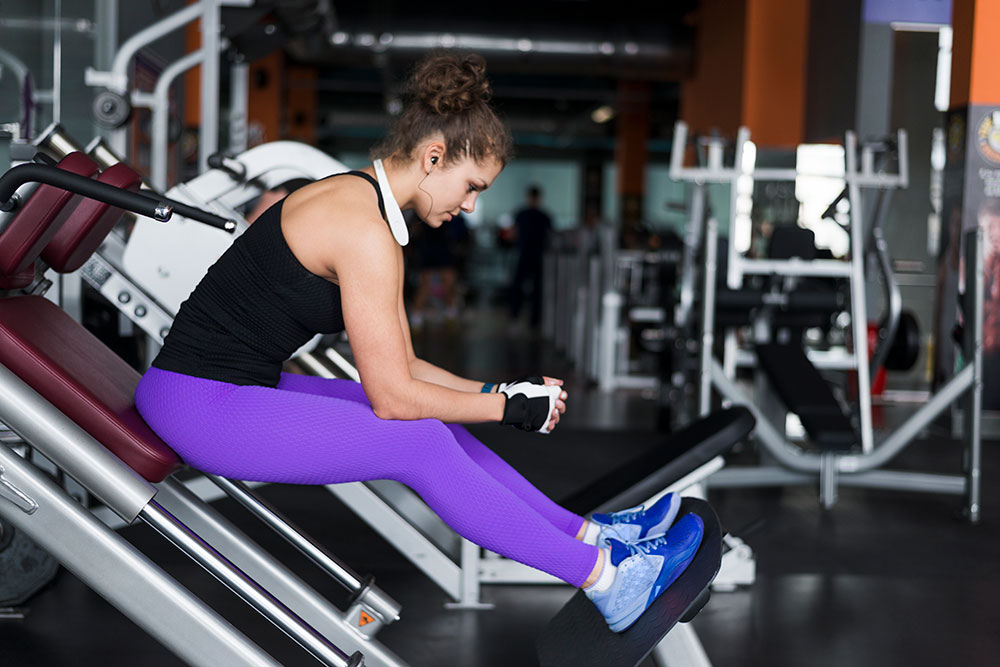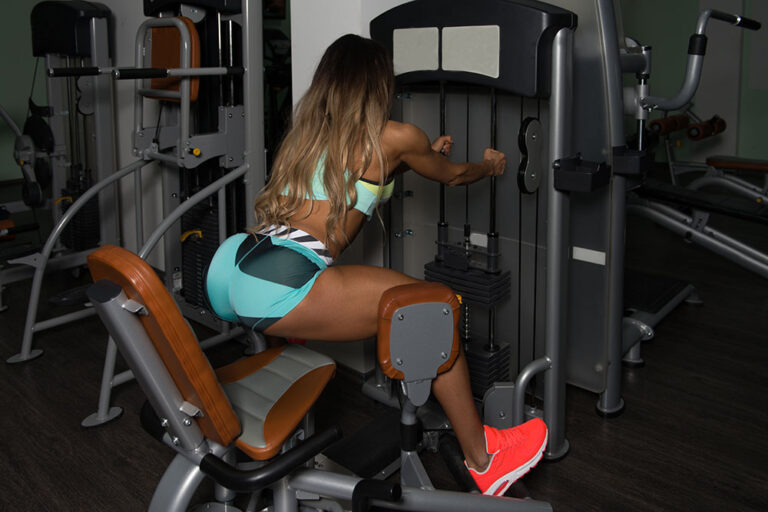Lower Body Exercises for Someone with Bad Knees
Knee pain can feel like a roadblock on your fitness journey. Whether it’s due to arthritis, injury, or overuse, it often leaves many feeling sidelined when it comes to lower body workouts. However, just because you have bad knees doesn’t mean you should skip exercising altogether. In fact, strengthening the muscles around your knees is crucial for improving stability and reducing discomfort.
Finding the right exercises tailored to your needs can make all the difference in keeping you active and pain-free. With some smart choices and modifications, you can still enjoy a fulfilling workout routine that supports your joints while helping you build strength and flexibility. Let’s explore effective lower body exercises specifically designed for someone with bad knees!
Overview of Knee Issues and Exercise Importance
Knee issues are incredibly common, impacting people of all ages. From osteoarthritis to ligament injuries, these conditions can cause pain and limit mobility. As a result, many individuals may shy away from physical activity.
However, exercise plays a vital role in managing knee problems. Engaging in targeted workouts helps strengthen the muscles that support the joint. This added stability can lead to reduced pain and improved function.
Moreover, staying active is essential for maintaining overall health. It promotes better circulation and aids in weight management—two factors that can alleviate pressure on your knees.
When approached carefully, movement becomes an ally rather than an adversary. Discovering appropriate exercises allows you to rebuild strength while minimizing discomfort, paving the way for a more active lifestyle despite knee challenges.
Finding the Right Exercises for You
Finding the right exercises when dealing with knee issues can feel daunting. Start by listening to your body. Pay attention to what movements cause discomfort and which ones provide relief.
Consulting a physical therapist or a fitness professional is invaluable. They can tailor an exercise plan that suits your specific needs, helping you avoid further injury.
Consider incorporating gentle strength training, focusing on low-impact activities. Resistance bands and light weights are excellent options for building muscle without straining the knees.
Don’t forget about your range of motion! Exercises that promote flexibility are equally important in reducing stiffness and maintaining mobility.
Experimentation is key here. Try different modalities like swimming or cycling to see what feels best for you while keeping joint stress minimal. Remember, every individual’s situation is unique; find what works specifically for you.
Exercises to Strengthen the Muscles Around the Knees
Strengthening the muscles around your knees can provide crucial support and stability. Focus on low-impact exercises that won’t aggravate existing knee pain.
Begin with straight leg raises. Lie flat on your back, keeping one leg bent while slowly lifting the other to a 45-degree angle. Hold for a few seconds before lowering it gently.
Wall sits are another excellent option. Stand against a wall and slide down into a sitting position without using a chair. This engages both quadriceps and hamstrings, building strength without straining the joints.
Calf raises can also be beneficial. Stand with your feet shoulder-width apart, then rise onto your toes and hold briefly before coming back down.
Incorporating these exercises regularly can help create stronger support systems for those vulnerable joints, enhancing mobility in everyday activities while minimizing discomfort.
Stretches to Improve Flexibility and Reduce Pain
Stretching is essential for anyone dealing with knee issues. It helps improve flexibility and can significantly reduce pain.
Gentle stretches targeting the muscles around your knees are incredibly beneficial. Consider calf stretches by standing on a step, lowering your heels to feel a gentle stretch in your calves. Hold for 15-30 seconds.
Another effective option is the hamstring stretch. While sitting, extend one leg straight out and reach towards your toes. This not only lengthens tight muscles but also promotes better mobility.
Don’t forget about quadriceps stretches! Standing up and pulling one foot towards your glutes will help ease tension in those important thigh muscles.
Incorporating these simple stretches into your daily routine can lead to noticeable improvements over time. Always listen to your body; if something feels uncomfortable, adjust accordingly or seek professional advice. Your knees will appreciate this mindful approach to flexibility!
Low Impact Cardio Options
Low impact cardio is a fantastic way to boost your heart health without putting extra strain on your knees. Activities like swimming and cycling are excellent choices. They allow you to get your blood pumping while keeping the pressure off those sensitive joints.
Walking is another great option. You can start at a comfortable pace and gradually increase intensity as you build stamina. Consider using an elliptical machine, which mimics running but with far less impact.
For something different, try water aerobics or dancing. These activities not only provide a fun workout but also help improve flexibility and strength in your legs.
Always listen to your body during these exercises. If something doesn’t feel right, don’t hesitate to modify or switch it up. Keeping active is essential for overall well-being, even when you’re mindful of knee health.
Tips for Proper Form and Modifications
Proper form is vital for anyone, but especially if you have bad knees. Start by keeping your feet hip-width apart during exercises. This stance provides better stability and reduces strain.
Engage your core to support your lower back. A strong core takes pressure off the knees and helps maintain balance throughout movements.
When squatting or lunging, ensure that your knees don’t extend past your toes. This minor adjustment can significantly lessen impact on knee joints.
If a specific exercise feels uncomfortable, don’t hesitate to modify it. Use a chair for support during squats or limit the range of motion in lunges until you feel more comfortable.
Always listen to your body; pain is not progress. Slow down and allow yourself extra time for each movement as needed, gradually building strength while prioritizing safety in every workout session.
Creating a Balanced Workout Routine for Bad Knees
Designing a balanced workout routine is essential for anyone dealing with bad knees. Start by integrating strength training, flexibility work, and low-impact cardio into your regimen.
Focus on exercises that target the muscles around the knee. Strong quadriceps and hamstrings can provide better support for the joint. Incorporate movements like leg lifts and seated leg extensions—these are easy on the knees.
Don’t neglect flexibility either. Stretching daily helps maintain range of motion while reducing stiffness. Gentle yoga or static stretches can be particularly beneficial.
Low-impact cardio options such as swimming or cycling keep your heart healthy without putting excessive strain on your knees. Aim for consistency rather than intensity to build endurance over time.
Listen to your body during workouts. If something feels off, don’t hesitate to modify or swap out an exercise until you find what works best for you.
Conclusion: Taking Care of Your Knees for Long-Term Health
Taking care of your knees is essential for long-term health and mobility. By focusing on lower body exercises specifically designed for those with knee issues, you can strengthen the surrounding muscles and improve overall joint stability. Incorporating stretches will enhance flexibility, helping to alleviate pain and discomfort.
Opting for low-impact cardio options allows you to stay active without putting excessive strain on your knees. Always prioritize proper form during exercises and be open to modifications that suit your individual needs. Creating a balanced workout routine will not only benefit your knees but also contribute positively to your overall wellness.
Remember that listening to your body is key. Consult with a healthcare professional or physical therapist before embarking on any new exercise program, especially if you’re dealing with chronic knee pain or injuries. Staying proactive about knee health today lays the foundation for continued movement tomorrow—ensuring you maintain an active lifestyle as you age gracefully.
- About the Author
- Latest Posts
Johnnie D. Jackow Sr., the founder and CEO of Total Body Fitness, Worldwide, has a long-standing career in the fitness industry. He began as a certified personal trainer in the mid-90s and soon after authored his first weight loss book in 1998. This led to the launch of Total Body Fitness, Nationwide in the USA at the same time. Johnnie gained recognition as the fitness guru of his time, running infomercials on local TV late at night in Houston, Texas. Over the years, he has helped more than 40,000 individuals from all over the world achieve their health and fitness goals. With over 60,000 hours of documented training in integrative functional medicine, he completed his PhD in human physiology in 2010. His primary objective is to assist people in reaching their health and fitness goals through alternative approaches rather than relying solely on conventional medicine and pharmaceutical drugs. Today, with almost three decades of experience under his belt, Johnnie continues to be a leader in health and fitness.








